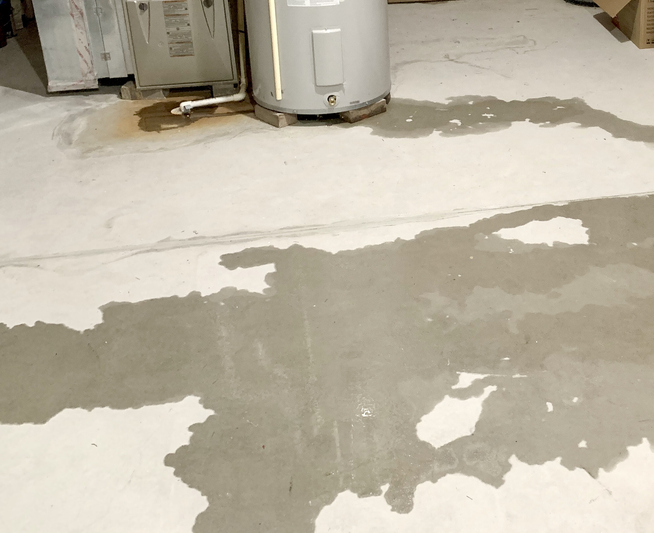Slab leaks represent a significant and often overlooked threat to your home’s structure. Occurring beneath the concrete foundation of your house, these leaks can lead to extensive damage if not promptly identified and addressed. In this comprehensive guide, we’ll explore what slab leaks are, how to spot them, and effective methods for fixing them.
What is a Slab Leak?
A slab leak is a leak that occurs in the water pipes installed within or under the concrete slab foundation of a house. Common causes include pipe corrosion, abrasion from long-term contact with concrete or gravel, high water pressure, or poor-quality pipe installation. Understanding these causes is crucial for both prevention and early detection.

Identifying Slab Leaks
Early detection is key to minimizing damage when it comes to slab leaks. Implementing regular slab leak detection practices is crucial in catching these issues before they escalate into major problems. Homeowners should be vigilant and look out for signs like:
- Unexpected Increases in Water Bills: A sudden and unexplained spike in your water usage often indicates a hidden leak.
- Sounds of Running Water: If you hear water flowing when all taps are off, it might be a leak under the slab.
- Damp Spots or Mildew: Unusual moisture under carpets or flooring can signify a leak from pipes beneath the slab.
- Decreased Water Pressure: A noticeable reduction in water pressure could suggest a leak in your plumbing system.
- Warm Spots on Floors: Specifically indicative of hot water line leaks, these can be detected by feeling unexpected warm areas on the floor.
Regular slab leak detection not only helps in identifying these signs early but also plays a significant role in protecting the structural integrity of your home and avoiding costly repairs in the long run.”
The Impact of Slab Leaks
Neglected slab leaks can wreak havoc over time, leading to:
- Erosion of soil under the foundation, causing cracks and structural damage.
- Mold and mildew growth, posing health risks.
- Significant water wastage and increased utility costs.
DIY vs. Professional Repair
While minor leaks might be a DIY fix for the experienced homeowner, professional intervention is often necessary. Professionals use specialized equipment to detect and repair leaks with minimal invasion and ensure long-term solutions.
Repair Methods
- Spot repairs: Fixing the leak at its source.
- Rerouting or repiping: Replacing the entire line if the system is old or extensively damaged.
- Epoxy pipe coating: Used for minor leaks or as a preventive measure.
Repair options vary depending on the leak’s severity:
Prevention Tips
Preventive measures include:
- Regular plumbing inspections.
- Installing water pressure regulators.
- Replacing old pipes with corrosion-resistant materials.
Understanding and addressing slab leaks is vital for maintaining the structural integrity of your home. Regular maintenance, awareness of warning signs, and prompt professional intervention can save you from the stress and expense of major repairs. Remember, when it comes to slab leaks, early action is your best defense.
For a more comprehensive understanding of why early detection matters for these types of leaks, read the article “13 Dos and Don’ts for Slab Leak Detection: A Guide for Homeowners.”
